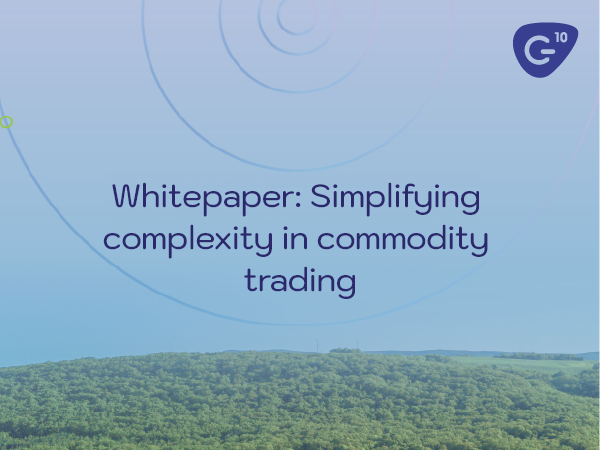There is no doubt about it, carbon markets are on the rise, and with pressure from governments, consumers and investors, it is looking likely that every organisation will soon need to take steps to reduce their carbon footprint and offset the emissions that cannot be prevented.
There are many different carbon markets available for businesses to manage their environmental assets, from mandatory emissions trading schemes to small-scale investments in carbon reduction at the community level. Each market has its own challenges that need to be addressed in order for carbon offsetting to be an effective tool for the climate and for business.
Voluntary markets lack transparency
Voluntary carbon markets arise due to demand from organisations looking to lower their carbon emissions or reach net zero emissions. Carbon credits in these markets begin life with a project to prevent carbon dioxide being emitted, such as by providing efficient cookstoves to communities using wood fuel, or to remove it from the atmosphere.
Organisations may choose to invest in these projects directly, but often find it easier and lower-risk to invest in a portfolio of different projects collated by a broker. For brokers and businesses buying the credit to retire it (using it to offset their real-world emissions), traceability is essential. These organisations need to ensure that they are investing in projects that add real value and offset the claimed emissions to protect against fraud and accusations of greenwashing, and increasingly to access trade finance and to be part of the supply chain.
Low-quality carbon credits create a reputational risk for end buyers and can defeat the purpose of purchasing carbon offsets. Organisations typically purchase credits because this is simply more feasible or cheaper than reducing actual carbon dioxide emissions, so if the credit does not really offset the emission, it can do net harm by preventing effective action. Brokers trading low-quality credits also risk reputational damage and could also incur a legal risk if the credits they are supplying do not meet the terms of their contracts.
As well as the damage to individual entities, poor quality credits limit the market’s effectiveness; if buyers are not sure they are receiving what they have paid for, prices are pushed down. This is a particular issue in the current voluntary markets as it is widely accepted that current average prices of $3-5 per tonne of CO2 emitted are unsustainably low and need to increase if they are to have high environmental integrity – especially when compared to the cost in mandatory markets such as the EU ETS where prices are close to $100 per tonne.
High-quality credits should be priced appropriately
As the above shows, the market is flooded with low-quality products and buyers are calling out for investment options with real credibility. High-value credits can therefore command a price premium, particularly as voluntary carbon markets often operate through OTC contracts where each aspect of a carbon offsetting project can be priced accordingly.
Just some of the variables that could impact pricing include:
- Whether the project prevents carbon emissions or removes CO2 from the atmosphere
- The project’s added value, such as supporting multiple UN Sustainable Development Goals
- The method used to prevent emissions and where its impact is felt
- The project’s size and location impacting its costs
- The credit’s vintage
- Additional services such as ongoing project updates or marketing support
- Supply and demand for the different credit types
If a project is delivering some of these added benefits, but this is not reflected in the pricing, a huge opportunity is being missed. And this problem is not always limited to pricing. Failing to price appropriately can also be a symptom of poor information management and verification. This means that brokers and end buyers are purchasing credits without a complete overview of the project’s positive impact or simply have no way to verify it, so they are missing out on being able to capitalise on this information.
The solution to pricing high-quality carbon credits fairly and profitably is the same as the solution to the circulation of poor-quality credits; markets need more transparency with better sharing of data between participants.
With little regulation or oversight in these voluntary markets, it is up to each company to manage their supply chain data appropriately. Brokers need to understand the projects they are investing in and communicate their value to their buyers, whether in back-to-back trading or as part of a portfolio. And end buyers can protect their own organisation from risk as well as improving their supply chain integrity by requiring verification and managing their investment data in a clear and accessible format.
Discover how technology can help >>
Compliance markets lack integration
Carbon credits trading on compliance markets are more standardised than those bought voluntarily, but this standardisation does not extend across markets. Much of this challenge is simply because the markets are relatively new, and they are now developing more standards and schemes for new sectors to create systems in line with established marketplaces.
Critics of compliance markets point out the above challenges in terms of ensuring credit quality, and the risk of double-counting – of the same credits being used multiple times by being traded on separate markets, so the buyer’s purchase is wasted.
There can also be some overlap between voluntary and compliance markets, such as in South Africa, where companies subject to a carbon tax can buy and retire voluntary carbon credits instead of paying the tax, and models like this are expected to grow. This means that organisations will need to integrate their carbon monitoring and trading systems to ensure they are purchasing and retiring the correct number of credits. And understanding the data on current and future credit needs also allows businesses to manage their price risk in these volatile markets and hedge against future price moves.
As is the case with voluntary markets, in compliance markets transparency can help the market function better by providing clarity across suppliers and buyers; giving assurance for buyers and the wider market. Internal data transparency also acts as a significant strategic advantage in these markets as it allows organisations to make the best decisions based on all the information from the market, client demand and or/the organisation’s own carbon offsetting needs.
Improving the level of data the organisation holds on its carbon assets, and the efficiency with which it is processed and used for decision making does not solve the structural environmental market challenges, but it does give the organisations using it best a significant competitive advantage. By managing carbon credit data and improving transparency, organisations can gain reputational and financial advantages, whilst better protecting their business from risk.
If your organisation struggles to manage your carbon credits and other environmental market assets, explore how Gen10’s NetZero OS can help.
Want to read more?
Subscribe now for monthly updates
By submitting your details you agree that we can store your data and communicate with you. You can opt out of these communications at any time. Read all in our Privacy Policy.



